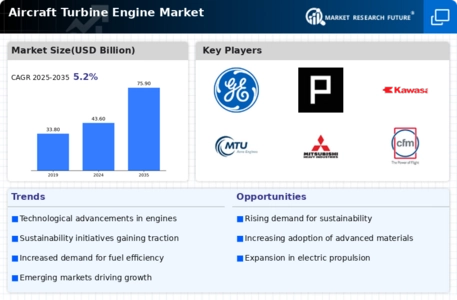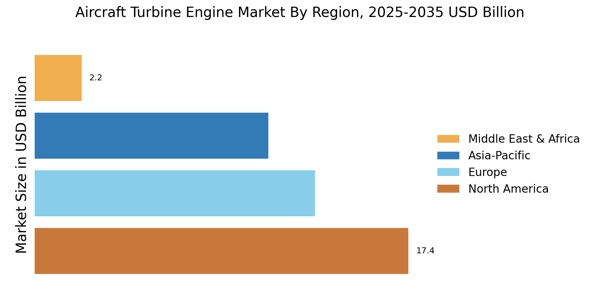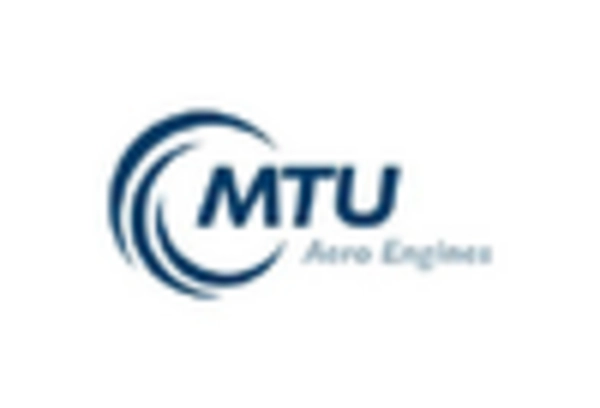Growth in Military Aviation Sector
The growth in the military aviation sector is emerging as a crucial driver for the Aircraft Turbine Engine Market. Nations are increasingly investing in modernizing their military fleets, which often involves the procurement of advanced turbine engines for fighter jets, transport aircraft, and unmanned aerial vehicles. This trend is fueled by geopolitical tensions and the need for enhanced defense capabilities. According to estimates, military spending on aviation is projected to increase, leading to a surge in demand for high-performance turbine engines. Consequently, this growth in military aviation is likely to have a substantial impact on the Aircraft Turbine Engine Market.
Increasing Demand for Fuel Efficiency
The Aircraft Turbine Engine Market is experiencing a pronounced shift towards fuel efficiency, driven by rising fuel costs and environmental regulations. Airlines are increasingly seeking engines that offer better fuel economy to reduce operational costs. According to recent data, fuel-efficient engines can reduce fuel consumption by up to 15% compared to older models. This trend is likely to propel manufacturers to innovate and develop advanced turbine technologies that enhance performance while minimizing emissions. As a result, the demand for next-generation engines is expected to rise, influencing the overall growth trajectory of the Aircraft Turbine Engine Market.
Technological Advancements in Engine Design
Technological advancements are playing a pivotal role in shaping the Aircraft Turbine Engine Market. Innovations such as additive manufacturing and advanced computational fluid dynamics are enabling the development of more efficient and powerful engines. For instance, the introduction of geared turbofan engines has demonstrated a potential reduction in noise and fuel consumption, appealing to both airlines and regulatory bodies. Furthermore, the integration of smart technologies, including predictive maintenance systems, is enhancing operational reliability. These advancements not only improve engine performance but also contribute to the sustainability goals of the aviation sector, thereby driving growth in the Aircraft Turbine Engine Market.
Regulatory Pressures for Emission Reductions
Regulatory pressures aimed at reducing aviation emissions are increasingly influencing the Aircraft Turbine Engine Market. Governments and international organizations are implementing stringent emission standards that require manufacturers to develop cleaner and more efficient engines. The International Civil Aviation Organization has set ambitious targets for reducing greenhouse gas emissions, which is prompting innovation in engine technology. As a result, manufacturers are investing in research and development to create engines that comply with these regulations while maintaining performance. This regulatory landscape is expected to drive the demand for advanced turbine engines, thereby shaping the future of the Aircraft Turbine Engine Market.
Expansion of Air Travel and Fleet Modernization
The expansion of air travel is a significant driver for the Aircraft Turbine Engine Market. As passenger numbers continue to rise, airlines are compelled to modernize their fleets to meet demand. This modernization often involves replacing older aircraft with newer models equipped with advanced turbine engines that offer improved efficiency and lower emissions. Data indicates that the commercial aviation sector is projected to grow at a compound annual growth rate of approximately 4.5% over the next decade. Consequently, this growth is likely to stimulate investments in new aircraft and engines, further propelling the Aircraft Turbine Engine Market.


















Leave a Comment